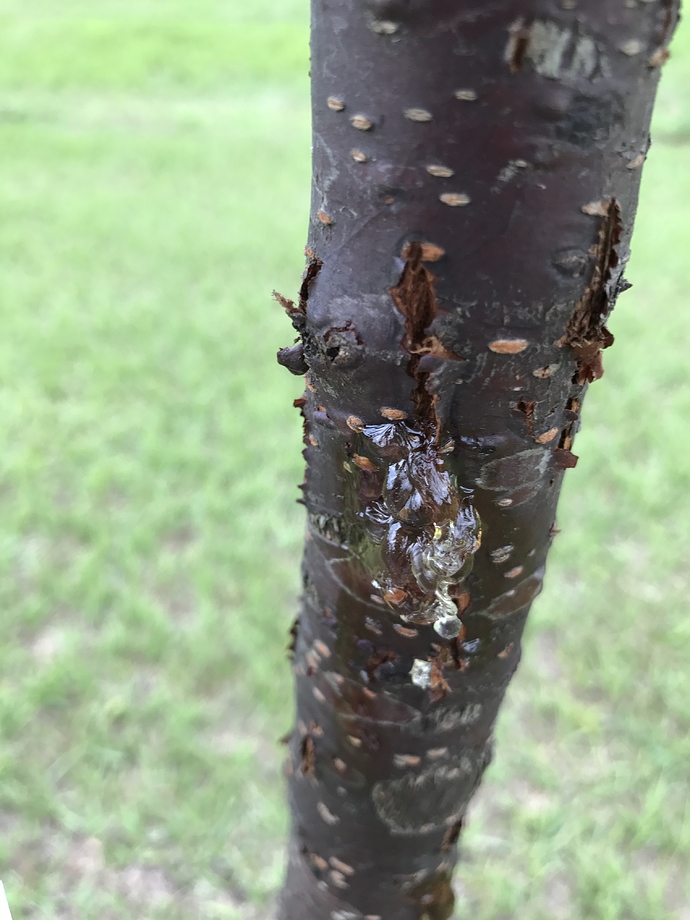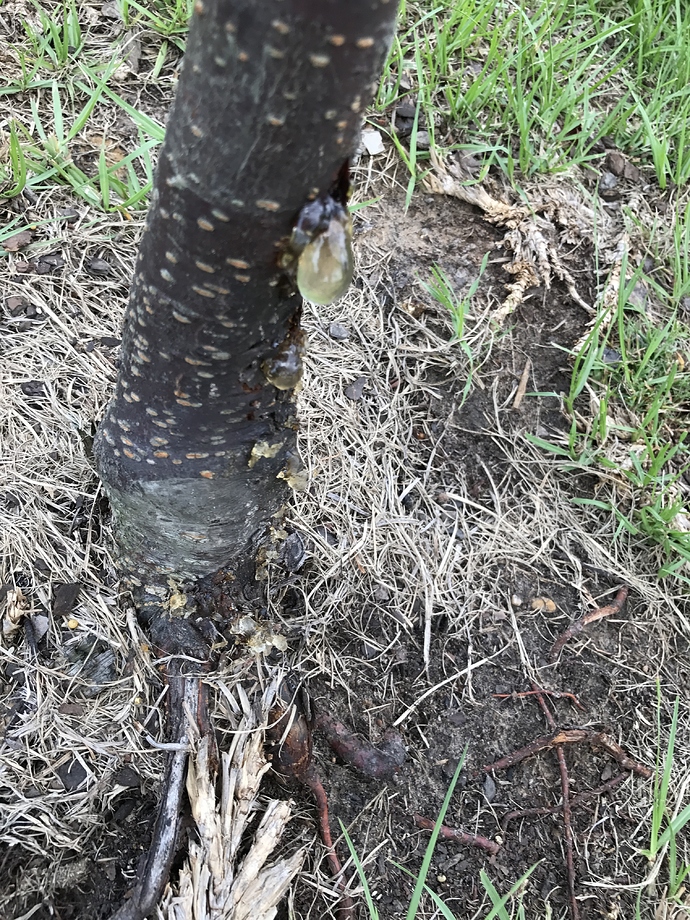My friend had a Mehtley plum for 5-6 years. It was full of black knots by year 5, granted she did not do anything to take care of the problem ( not even removed the infected area). After it got real bad, I convinced her to remove it and she did.
I’m considering removing the one I have. I have grafted in several other varieties and I don’t think I will need it as a pollinator after one more year.
Mine hasn’t been so bad, so far. One big knot that I cut out successfully, a couple of small ones every year.
I got tired of battling a few plum trees and am trying to topwork them into peaches, will keep my fingers crossed to the outcome.
Let us know how that turns out. My understanding was that most plums aren’t compatible rootstocks for peaches, with a few exceptions such as St Julians.
So far Gold Dust is growing… however… they could abort…
This is a timely topic since I just cut out my first batch of black knot last week. Has anyone come up with a list of non-fruiting species that are susceptible to this disease? Curious if pines, maples, sweetgums and tulip poplars are susceptible to it as well?
How often do you check. The black stuff takes a while to grow, but once it starts its hard to miss. I think you’re not spraying enough, or looking at your trees often enough. You just cannot wait with Black Knot. It is one nasty fungus. I too only had it on my mirabelles, gage and prune plum. Horrible, but I sprayed, MFF, and another recommended fungicide from this forum. It has finally stopped raining today, so hopefully I will be able to spray for it this week. It winters over, so during the winter is the time you can see it on your trees and prune it out in Feb. 
Don’t think so. Wild cherry is the only I know that is susceptible in my area. I try to keep the wild cherry on my property since it is said to be valuable lumber.
My Methley has never had it but I am going to look now.
(Edit: Nope - did not see any. Haven’t been spraying it this year because the fruit froze. Just wonder if I ought to for Black Knot.)
You can add Methley to the list of black knot targets. Just removed a big knot from my tree. 
Just walked the orchard and found about a dozen or so BK strikes. All but two where on small branches, easy to remove by pruning. The two on scaffold branches will have to be surgically cut out when time allows. All where on mirabelle and blue damsons. None found on the Asian plums and surprisingly none (ever!) on my 20 sour cherry trees. Not bad I guess, considering the amount of infected wild cherry trees around the area.
Our native cherries get it, not the fruiting kind that I’ve ever noticed. Apricots are slightly susceptible.
Yes, if your orchard is a site with lots of black-knot, Methely is a must to avoid, but it is the earliest red-flesh plum I know.
One thine I can’t figure out is why some sites have so much more black-knot than others in the same region. The obvious issues are, lack of eastern exposure, excessively dense trees and the presence of diseased native cherries, but I’ve often been stumped after dismissing these three issues at a bad site for it.
If you are in a site where Euros are doable, Bluebyrd may be nearly immune to the disease based on ACN claims and my own experience with the variety. So far it hasn’t really shown itself to be a high quality plum but at least it will be a good mother tree to use for a frankentree.
I have a plum that had black knot and had to cut the central leader back. This tree also has some small cracks in the lower trunk and is leaking sap/gel. Is this related?
had to remove my red fleshed Starking Delicious plum tree… immersed by black knot

Sorry to hear. how is the taste on those plums?
Tony
succulent and lush; juice would explode all over your face
The cracks and sap sound more like canker. Maybe knot does that as well but I have never seen that on any of my knotted trees.
I agree, I’m looking at various trees with black knot every day this time of year and don’t see sap. Plums don’t produce a lot of sap like peaches as a general rule- that’s why they can be severely damaged by borers without my noticing it until they lose vigor. (My plums are almost all on myro roots, a kind of plum).
Yep, removed 5 branches from a Flavor Supreme yesterday.

